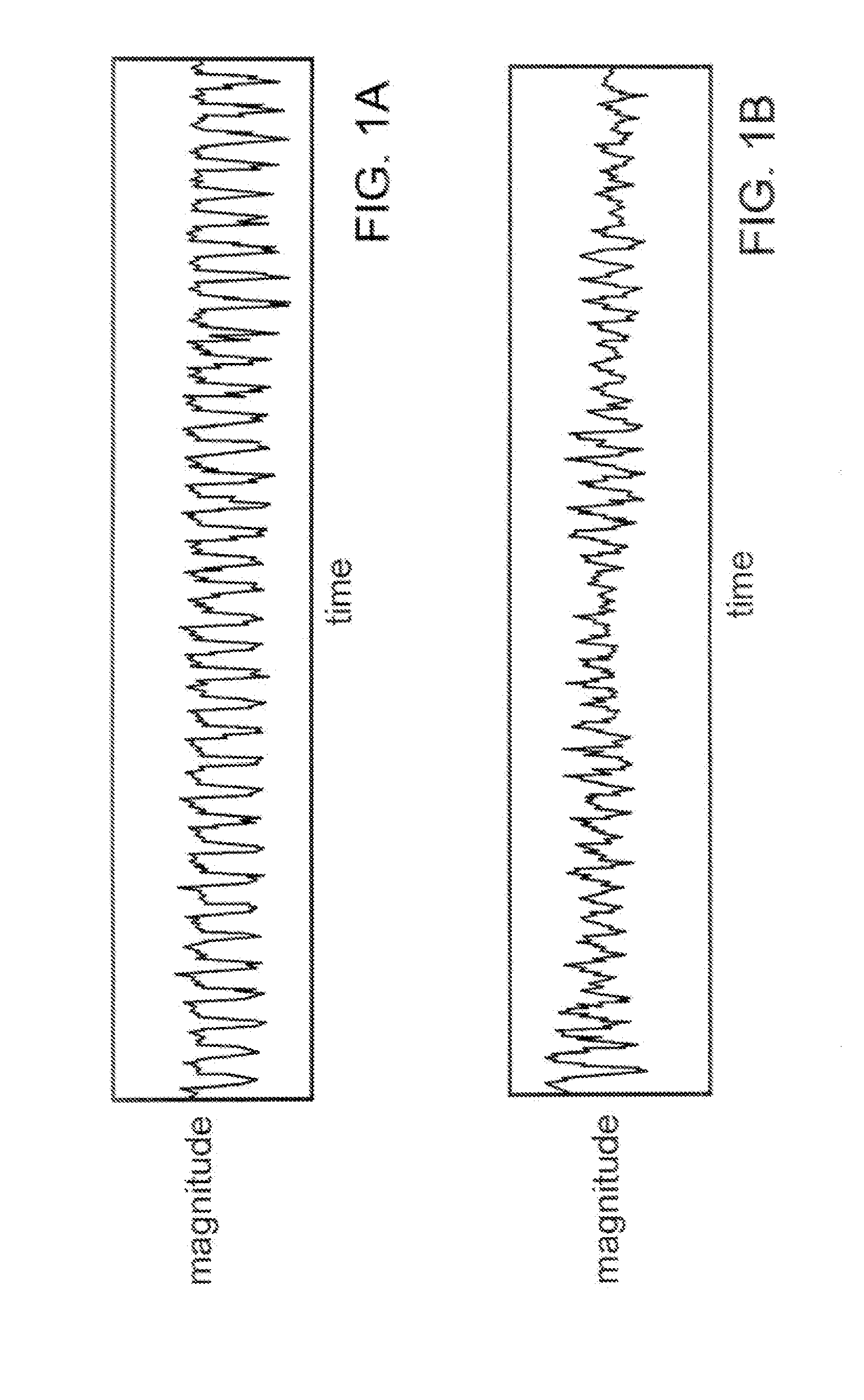ECG Rhythm Advisory Method
a technology of ecg and advisory method, applied in the field of cardiac resuscitation, can solve the problems of unstable vt, life-threatening condition, uncomfortable dizziness, etc., and achieve the effect of accurate analysis of ecg waveform
- Summary
- Abstract
- Description
- Claims
- Application Information
AI Technical Summary
Benefits of technology
Problems solved by technology
Method used
Image
Examples
Embodiment Construction
a ventricular tachycardia (VT) rhythm.
[0031]FIG. 1B is a magnitude versus time plot of a ventricular fibrillation (VF) rhythm.
[0032]FIG. 2 is a diagram of one implementation including an automatic electronic defibrillator (AED) and a multiple lead electrocardiograph (ECG) device.
[0033]FIG. 2A is a diagram of the AED of FIG. 2.
[0034]FIG. 3A is an example of a frequency spectrum plot with the energy concentrated within a small frequency range.
[0035]FIG. 3B is an example of a frequency spectrum plot with the energy distributed over a relatively larger frequency range.
[0036]FIG. 4 is an example of an ECG spectrum as a function of time. The magnitude (or energy) of the spectrum is encoded by the grayscale. A darker color corresponds to a higher magnitude.
[0037]FIG. 5 is an EFV score of the signal in FIG. 4 as a function of time.
[0038]FIG. 6 is a flow chart of a process for detecting VF in a patient during chest compressions.
[0039]FIGS. 7A and 7B are examples of an ECG spectrum at two poi...
PUM
 Login to View More
Login to View More Abstract
Description
Claims
Application Information
 Login to View More
Login to View More - R&D
- Intellectual Property
- Life Sciences
- Materials
- Tech Scout
- Unparalleled Data Quality
- Higher Quality Content
- 60% Fewer Hallucinations
Browse by: Latest US Patents, China's latest patents, Technical Efficacy Thesaurus, Application Domain, Technology Topic, Popular Technical Reports.
© 2025 PatSnap. All rights reserved.Legal|Privacy policy|Modern Slavery Act Transparency Statement|Sitemap|About US| Contact US: help@patsnap.com



